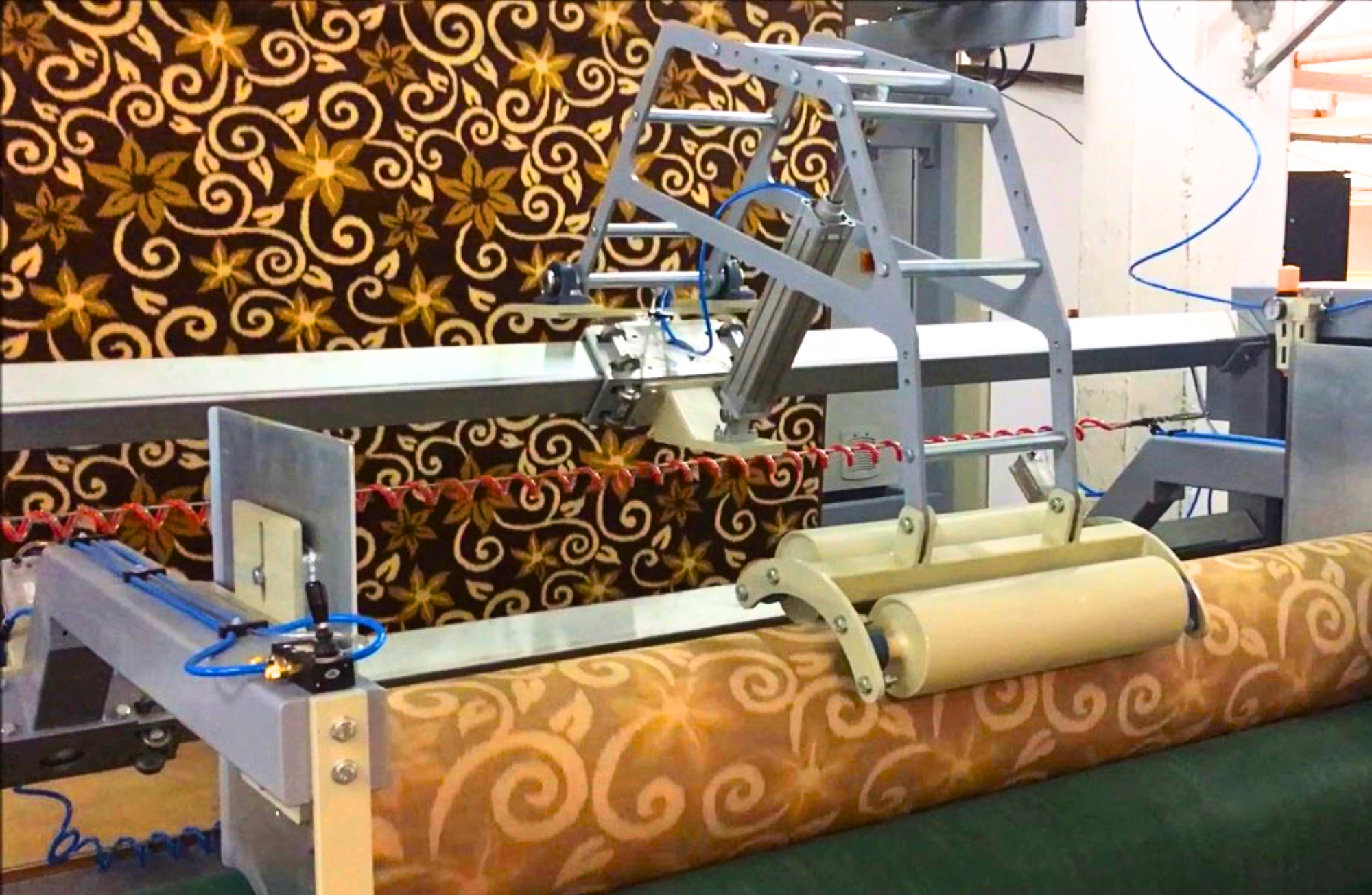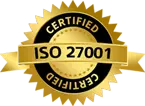How Machine Vision AOI Transforming Carpet Inspection In Manufacturing
Published on: May 21, 2025

Written by: Content team, Intelgic
How Machine Vision AOI Transforming Carpet Inspection In Manufacturing
In today’s competitive textile manufacturing landscape, delivering exceptional product quality is not just an advantage—it is a strategic imperative. Carpets, representing both style and functionality, must meet stringent quality standards to fulfill the high expectations of global consumers and commercial clients. Traditional manual inspection methods, while long-standing, often suffer from inconsistencies, inefficiencies, and human error. Enter Machine Vision AOI—a transformative solution that redefines the standards of precision and efficiency in carpet inspection.
By integrating cutting-edge imaging systems, artificial intelligence (AI), and advanced illumination techniques, AOI is setting a new benchmark in quality assurance. This article explores how AOI is revolutionizing carpet inspection, highlighting its core components, types of defects detected, workflow integration, and the unmatched advantages it brings to modern manufacturing.

Common Defects
Surface Imperfections
- Yarn Pulls, Snags, or Breakages: Disruptions in the yarn structure caused by mechanical stress or handling errors, often leading to visible thread protrusions or broken fibers on the surface.
- Irregular Pile Height: Inconsistencies in fiber length across the carpet surface, resulting in uneven textures and compromised aesthetics.
- Frayed Fibers and Edge Damage: Worn or unraveling fibers, particularly around the edges, diminishing both durability and appearance.
Pattern and Design Anomalies
- Misaligned or Distorted Patterns: Shifts or warping in the intended design due to weaving errors or equipment miscalibration, leading to noticeable inconsistencies in symmetry or layout.
- Color Irregularities, Streaks, or Shading Inconsistencies: Variations in dye application or fiber blending can cause uneven color distribution, resulting in noticeable streaks or unintended shading effects.
Structural Flaws
- Missing or Loose Tufts: Absence or detachment of tufted loops or cut fibers that create patchy or sparse areas in the carpet surface.
- Holes, Gaps, or Irregular Weave Structures: Physical voids or inconsistencies in the weave that disrupt the uniformity and weaken the carpet’s foundation.
Contaminants and Stains
- Oil Stains, Dirt, and Other Foreign Debris: Accumulation of unwanted substances such as grease, dust, or grime, which can stain or soil the carpet fibers.
- Embedded Particles: Fine contaminants that become lodged within the carpet structure during manufacturing, often invisible to the naked eye but detectable by AOI systems.
Edge and Border Issues
Defects along the carpet’s perimeter can affect its finished appearance and usability:
- Irregular Trimming or Frayed Borders: Uneven or sloppy edge cutting, often accompanied by loose threads that undermine the carpet’s visual polish and functional integrity.
- Binding and Hemming Inconsistencies: Defective or misaligned stitching along the carpet edges that can lead to unraveling, premature wear, or aesthetic imperfections.

Challenges in Carpet Inspection
Carpet inspection, though essential for quality assurance, presents several challenges—especially with manual methods that struggle to meet the demands of modern manufacturing.
- Human Error and Inconsistency: Visual inspections are prone to fatigue and subjective judgment, leading to inconsistent quality control.
- Difficulty Detecting Subtle Defects: Minor issues like color mismatches or pile irregularities often go unnoticed, especially at high production speeds.
- Slow and Labor-Intensive Process: Manual inspection slows down production and requires significant manpower, reducing overall efficiency.
- Complex Designs: Intricate patterns and textures make it hard to distinguish between acceptable variations and actual defects.
- Lack of Data and Analysis: Manual systems offer little defect tracking or analytics, limiting opportunities for process improvement.
- Skilled Labor Dependency: Finding and retaining trained inspectors is increasingly difficult amid workforce shortages.
- Environmental Influence: Lighting and other environmental factors can obscure defects, impacting inspection accuracy.
Technological Foundations of Machine Vision AOI in Carpet Manufacturing
The success of Automated Optical Inspection (AOI) in carpet manufacturing lies in the seamless integration of advanced imaging hardware, precision lighting systems, and intelligent software. Together, these components form a highly efficient and scalable solution that elevates quality control to a new level of accuracy and consistency. Below is a detailed overview of the core technologies driving modern AOI systems:
1. High-Precision Imaging Systems
Capturing clear and detailed visuals is fundamental to identifying subtle or hidden defects. AOI systems utilize a range of specialized cameras designed to meet the diverse needs of carpet inspection:
- Line-Scan Cameras
Optimized for continuous inspection of carpet rolls, these cameras deliver high-resolution linear images with consistent coverage across the full width of the material.Designed to detect fine inconsistencies such as pile height variation, fiber fraying, and color deviations, these cameras provide exceptional clarity and precision - Area-Scan Cameras
Ideal for capturing detailed snapshots of specific sections or individual carpet panels, allowing for focused inspection in localized areas.They are particularly effective in detecting stitching defects, ensuring seam integrity and uniformity throughout the carpet. - Infrared and Thermal Imaging Cameras
Used to identify thermal anomalies or heat-related defects that may arise during the manufacturing process, offering insights beyond the visible spectrum.
2. Precision Illumination Techniques
Effective illumination is critical for enhancing contrast and ensuring consistent image quality. AOI systems employ various lighting strategies tailored to highlight specific defect types:
- Diffuse Illumination
Provides uniform, shadow-free lighting, ideal for capturing surface characteristics and detecting texture irregularities.
- Structured Lighting
Projects controlled light patterns to reveal depth-related flaws such as uneven pile or tuft misalignment.
- Multi-Spectral Illumination
Uses a combination of light wavelengths to detect subtle color mismatches, material inconsistencies, and foreign contaminants.
- Dark-Field Illumination
Illuminates the carpet from oblique angles to accentuate surface imperfections, such as scratches or embedded particles, that may otherwise go unnoticed.
3. AI-Driven Software – Intelgic’s Live Vision
At the core of Intelgic’s AOI solution is Live Vision Software, a powerful AI-based platform that delivers intelligent, real-time analysis and actionable insights. Its capabilities include:
- Advanced Pattern Recognition
Differentiates between acceptable design variations and true defects, even in carpets with intricate patterns and textures.
- Adaptive Machine Learning
Continuously refines its algorithms based on inspection feedback and production data, ensuring ongoing improvement in detection accuracy.
- Real-Time Defect Identification
Instantly detects and classifies defects as carpets move along the production line, enabling immediate response and minimal disruption.
- Comprehensive Reporting and Analytics
Generates detailed reports that include defect trends, locations, and severity levels—empowering manufacturers to optimize quality control processes.
- Seamless Integration with Production Systems
Easily integrates into existing manufacturing infrastructure, facilitating synchronized data sharing and automated corrective actions where necessary.
Step by Step Inspection Process with Machine Vision AOI
System Setup and Calibration
The inspection process begins with precise calibration of camera settings, lighting conditions, and defect detection parameters tailored to the specific carpet type. This foundational step ensures optimal system readiness for accurate defect identification.
Continuous Image Acquisition
High-speed cameras capture high-resolution images in real-time as the carpet progresses through the production line, providing exhaustive coverage to detect defects without interrupting manufacturing flow.
Adaptive Defect Detection
Leveraging advanced artificial intelligence algorithms, the system not only identifies and classifies defects but also continuously learns from inspection data, enhancing detection accuracy and adapting to new defect variations over time.
Defect Localization and Severity Assessment
Each identified defect is precisely mapped with exact location coordinates and evaluated for severity. This granular information enables prioritized intervention focused on defects that pose the greatest risk to product quality.
Real-Time Alerts and Process Adjustments
The system delivers immediate notifications to operators upon defect detection and can autonomously adjust production parameters in real time to mitigate recurring issues, minimizing downtime and waste.
Comprehensive Reporting and Trend Analysis
Inspection data is aggregated into detailed reports, providing actionable insights into defect patterns and production trends. This information supports root cause analysis and informs continuous improvement initiatives.
Automated Corrective Recommendations
Beyond detection, the AOI system offers targeted recommendations for corrective actions—such as machine recalibration or raw material adjustments—to enhance process stability and reduce defect recurrence.
Key Advantages of AOI in Carpet Inspection
Superior Detection Accuracy: AOI systems consistently identify subtle defects that may be overlooked by manual inspection, ensuring the highest product quality.
Streamlined Production Processes: Continuous, real-time monitoring allows manufacturing to proceed without interruptions, significantly boosting productivity.
Standardized Quality Assurance: Automation eliminates subjective inconsistencies, delivering reliable and repeatable inspection results across all products.
Operational Cost Efficiency: By reducing the need for extensive manual labor and minimizing rework or scrap, AOI contributes to substantial cost savings.
Advanced Analytical Capabilities: Comprehensive data collection and analysis enable manufacturers to forecast maintenance needs and implement quality improvements proactively.
Why Partner with Intelgic for Carpet AOI Solutions?
Intelgic leads the carpet inspection automation landscape by delivering a powerful and adaptable AOI platform designed to address the dynamic challenges faced by today’s textile manufacturers. Key differentiators that make Intelgic the preferred choice include:
Innovative AI & Machine Learning: Employs advanced, adaptive algorithms that evolve over time to improve defect detection precision and reduce false positives.
Flexible, Customized Solutions: Engineered to seamlessly integrate with diverse carpet types and production environments, offering tailored configurations that align with your operational goals.
Superior Imaging & Lighting Systems: Utilizes high-resolution cameras combined with specialized lighting techniques to capture even the most elusive defects with crystal-clear detail.
Instantaneous Real-Time Insights: Provides immediate, actionable data to operators, enabling swift intervention without halting manufacturing processes.
Dedicated End-to-End Support: Delivers expert guidance from initial deployment through ongoing maintenance and optimization, ensuring sustained system performance.
Scalable Architecture for Growth: Built to accommodate expanding production volumes and evolving technological needs, guaranteeing longevity and adaptability
Automated Optical Inspection is revolutionizing the carpet manufacturing sector by replacing inconsistent manual processes with intelligent, accurate, and efficient automation. With Intelgic’s AOI solutions, manufacturers can not only meet but exceed modern quality standards—delivering superior carpets with reduced waste, improved efficiency, and greater confidence.
To learn more about how Intelgic can transform your carpet inspection process, visit intelgic.com or contact our automation specialists today.

